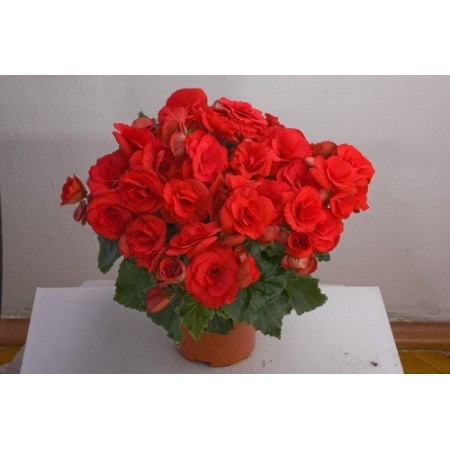Begonia cultivation

No need to be a professional florist in order to grow a real garden at home. In practice, there are many varieties of unpretentious plants in the care, which include begonia. It blooms luxuriantly, does not need constant care. In the material presented, we will answer questions about how to create suitable conditions for begonia so that this representative of the flora does not die after the first flowering season in apartments or private houses.
Choosing the right place in the house
A better place for begonias than a well-lit room is not to be found. A flower all year round needs an abundance of solar ultraviolet, without which we are unlikely to see lush bloom. But if in summer you can achieve this effect by placing the flowerpot on the illuminated windowsills (you need to protect it from direct sunlight), then in winter you will need to install artificial light sources that are activated after sunset.
In addition to light requirements, begonia is very sensitive to the atmosphere. The presence of drafts and sudden temperature changes are fatal for her, so it’s best to move the flowerpot to another room during the airing of the room in winter. In the summer, you can safely take the pot out to fresh air - so begonia will be able to freely grow and develop.
Watering and soil
In summer, begonia actively absorbs moisture from the soil, so you will need to constantly ensure that the earthen lump in the pot does not dry out. It will be enough to water the flower once a day - in the warm season, and once every few days - in the winter. For watering, it is necessary to use a settled liquid warmed up to room temperature.
Begonia must be grown in loose soil rich in organic matter. The easiest way will be to purchase ready-made mixtures in flower shops, suitable for classic varieties of indoor plants. In such compositions sand must be present, which in the future will perform the function of a drainage layer to rid begonia of excess moisture.
Reproduction and transplantation
Most often, the propagation of begonias uses the technique of cuttings. To do this, from March to April, the cuttings are placed on a substrate, their rooting is expected. It will be required to water them occasionally - so the shoots take root in a new place faster and give fresh shoots.
Begonia transplantation should only be done if the plant has become crowded in the current container. For a transplant, you will need to take a pot that will be a couple of centimeters larger than the previous one, create a preliminary drainage layer and fill the plant with new soil. We carefully monitor so as not to damage the root system of begonias, cleaning it from the old earth. Damaging the roots is very easy, but it will take quite a while to restore the plant.